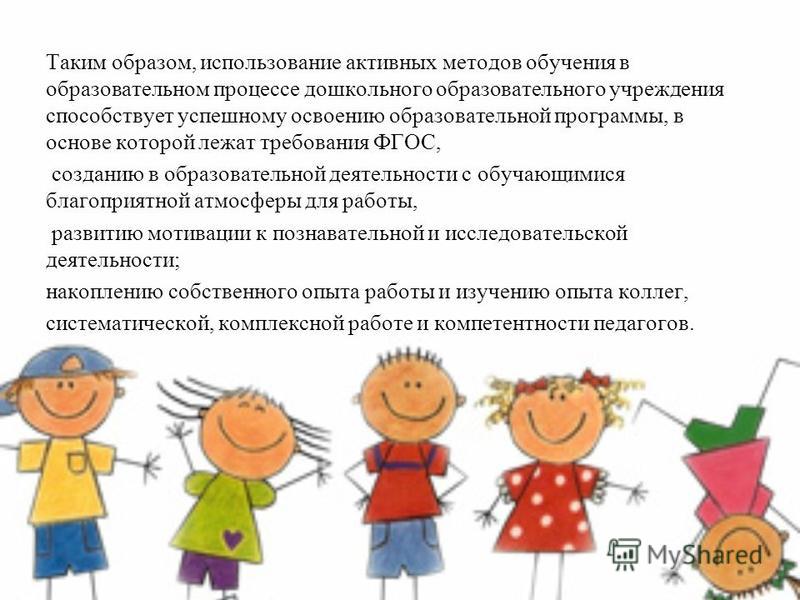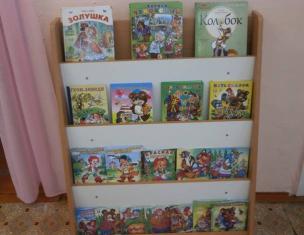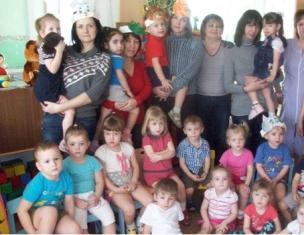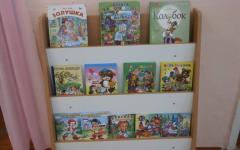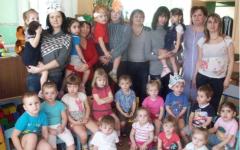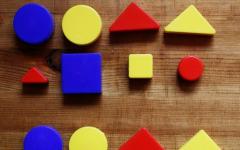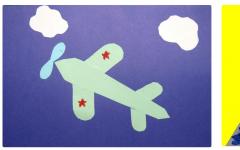Life in constantly changing conditions requires a specialist ability to solve regularly emerging new, non-standard problems. An indication of today is an increased professional pedagogical mobility. The new tasks and directions for the development of education determine the special requirements for the personality and professional competence of teachers.
Improving the professional competence of teachers is based on the intensification of their cognitive activity. This contributes to the manifestation of their independence, "pushes" to creative search, develops the ability to analyze, make decisions in various problematic situations. All neoplasms are subsequently applied in working with children. And, of course, modern pedagogy gives the championship in teaching active methods.
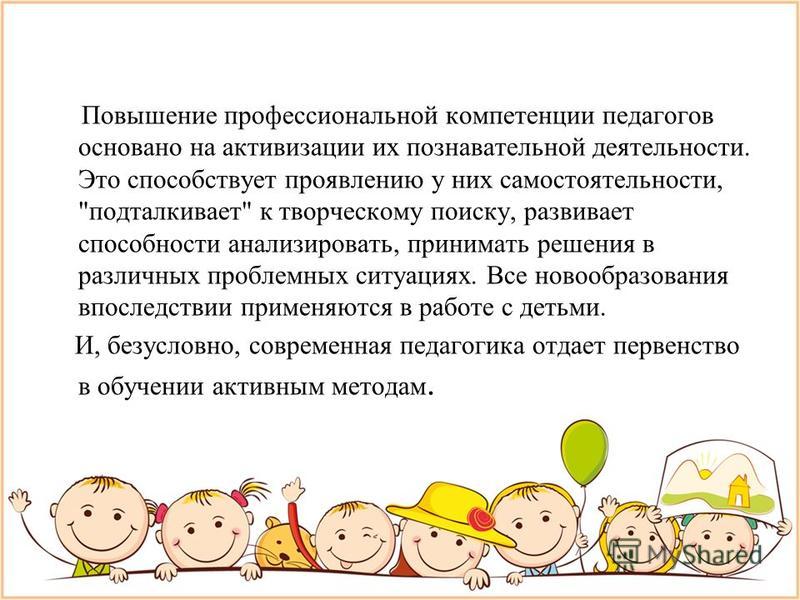
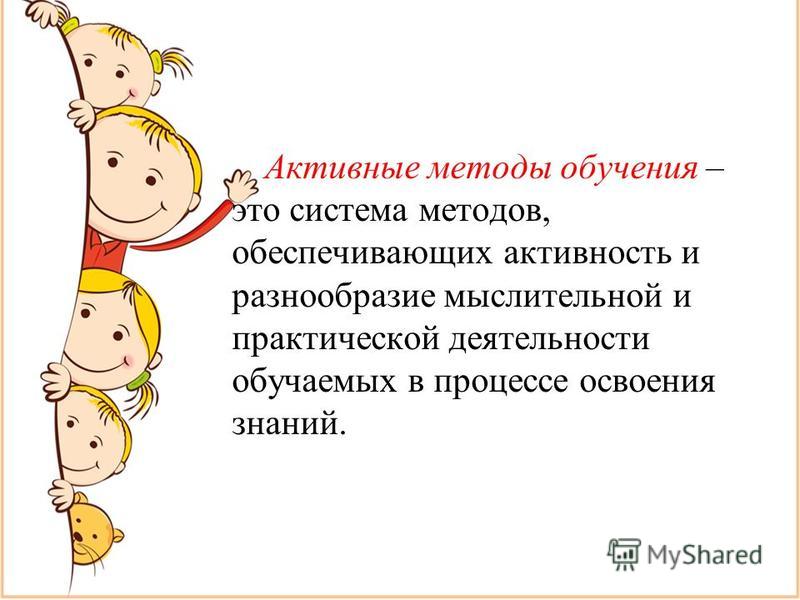
The task of active learning methods is to ensure the development and self-development of the personality of the student on the basis of identifying its individual characteristics and abilities, and the development of theoretical thinking is occupied by a special place, which involves an understanding of the internal contradictions studied models.
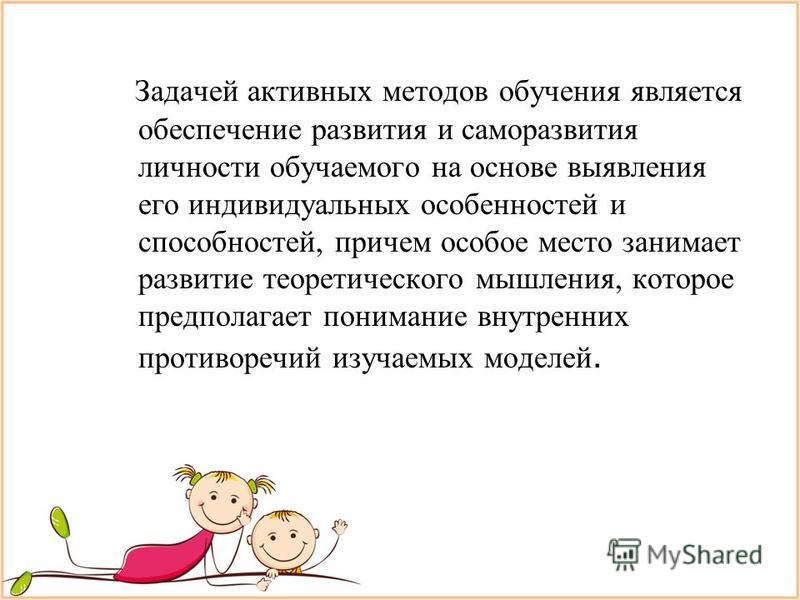
Theoretical and practical frameworks of the problem of using active learning methods are set out in the works: L. S. Vygotsky, A. A. Verbitsky, V. V. Davydova. Among the initial provisions of the theory of active learning methods, the concept of "subject matter content", developed by Academician A. N. Leontiev, in which knowledge is activities aimed at mastering the objective world.
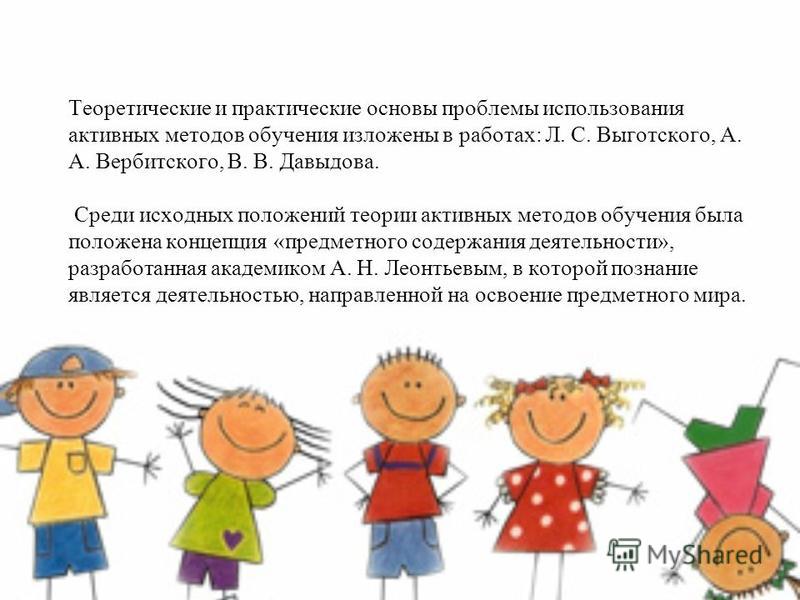
Thus, active learning methods are training in activities. L. S. Vygotsky formulated the law according to which training entails development, since the personality develops in the process of activity, which fully refers to children of preschool age.
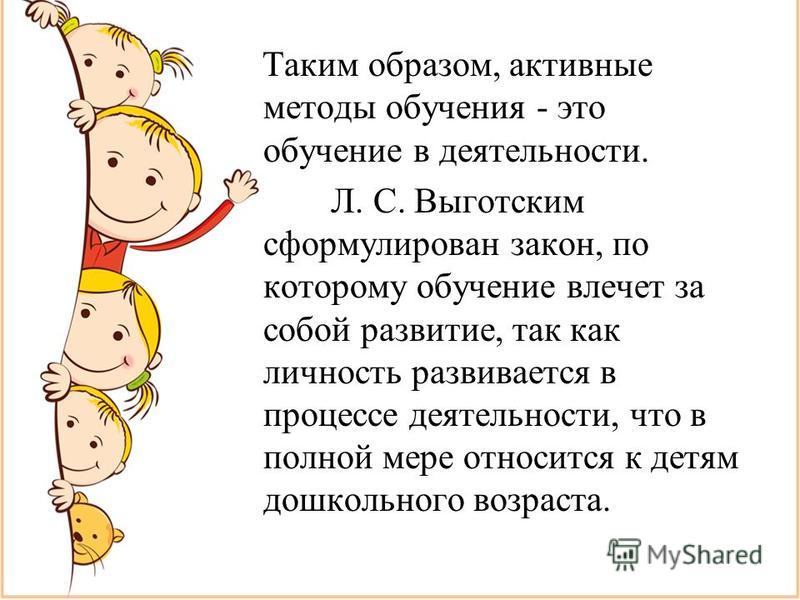
In preschool age, the usual form of activity is the game, therefore, it is most effective to use it in the educational process. The natural gaming environment in which there is no coercion is there and there is an opportunity for each child to find its place, managing the initiative and independence, freely realize its abilities and educational needs, is optimal to achieve these goals.
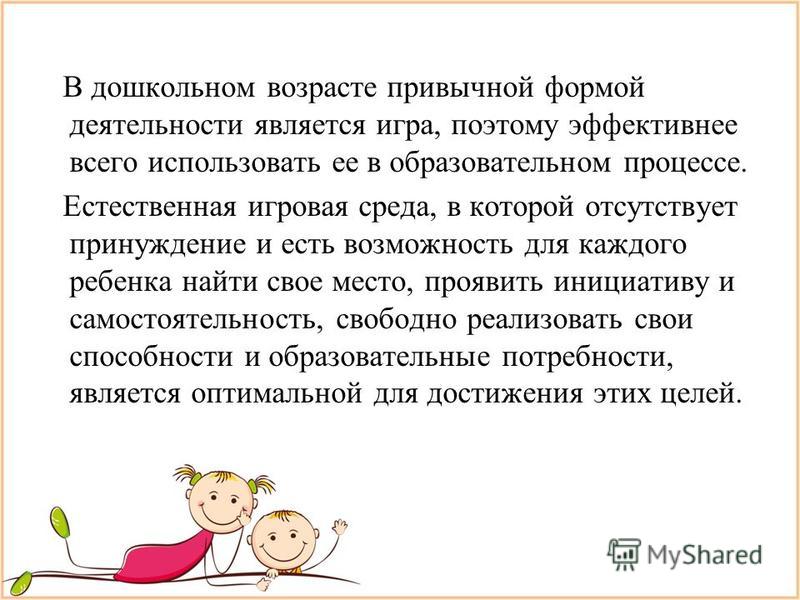
Gaming methods provide research solutions in dynamic unstable conditions, they allow you to work and compare several possible options. Emotional attitude, due to motivation and amaziness remove the effects of artificiality. Pedagogy of cooperation, joint search for the best decisions allow us to work out and systematically improve the best options for collective action. From the domination of the universal slogan "SIS - Sydi and listen to" to active: "Did - Think and do! "
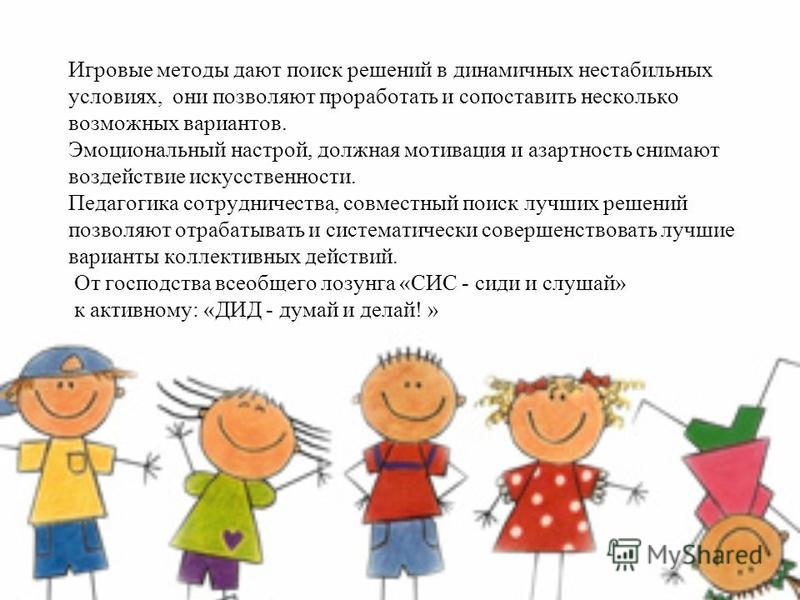
Active learning methods include: - Problem situations, study through activities, -group and steaming work, -English games, -datimization, theatricalization, -cake the "Dialogue" game, - "Brainstorm", Round Table, Discussion, -Methods of projects, allests of surprise, loving, confidence, success, - elegance of heuristic issues, - playing design and others.
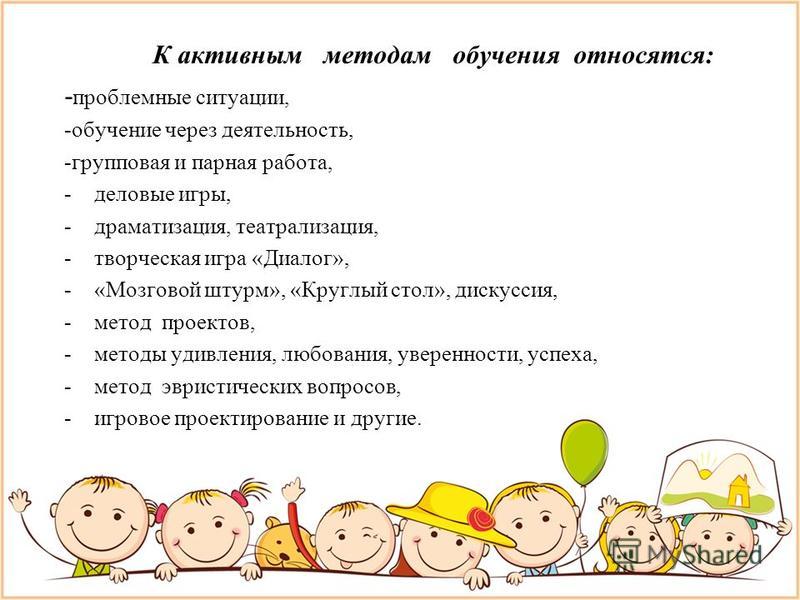
Project method is one of the methods of learning that promotes the development of independence of thinking, helping the child to form confidence in its own opportunities. It provides such a system of learning when children receive knowledge and master the skills in the process of performing the system of planned practical tasks. This is training through activities.
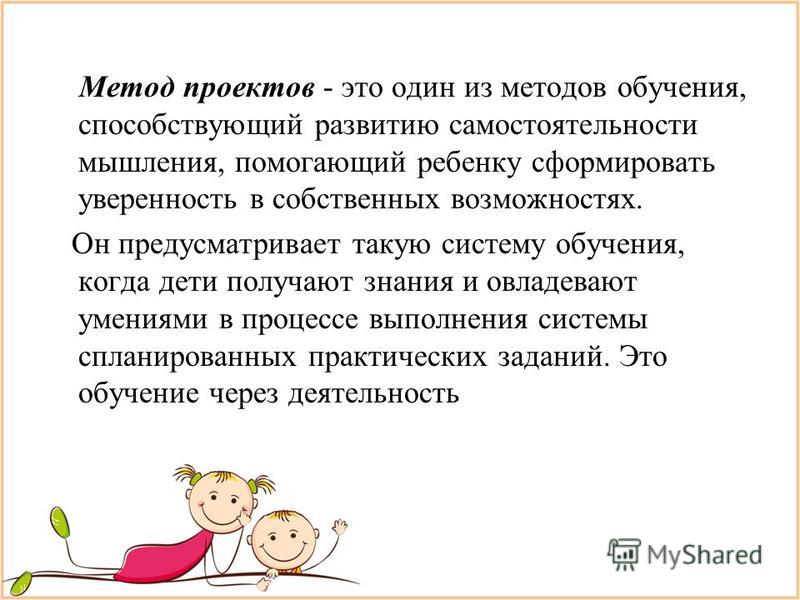
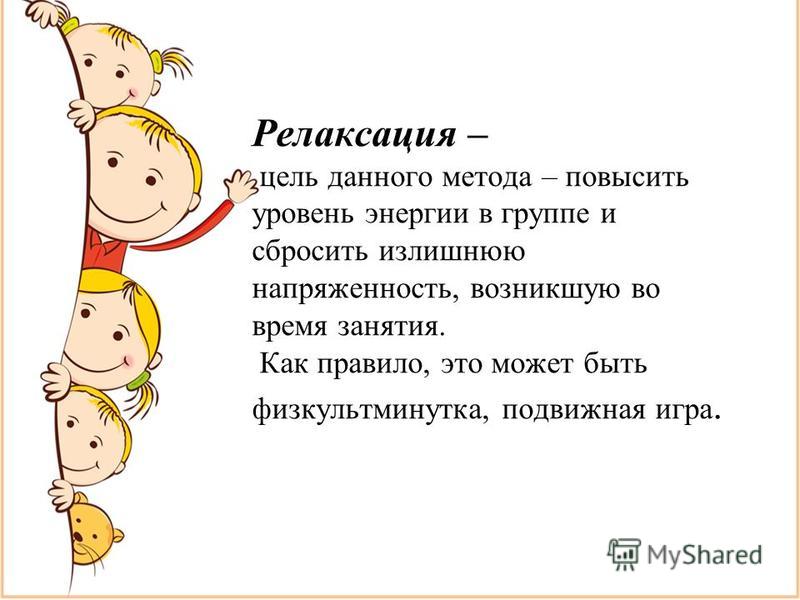
The method of heuristic issues is advisable to apply to collect additional information in the conditions of a problem situation. Euristic issues serve as an additional incentive, form new strategies and tactics to solve the creative task. It is not by chance that they are also called them in the practice of learning, as the question of a successfully delivered by the teacher leads the child to the idea of \u200b\u200bsolving the right answer.
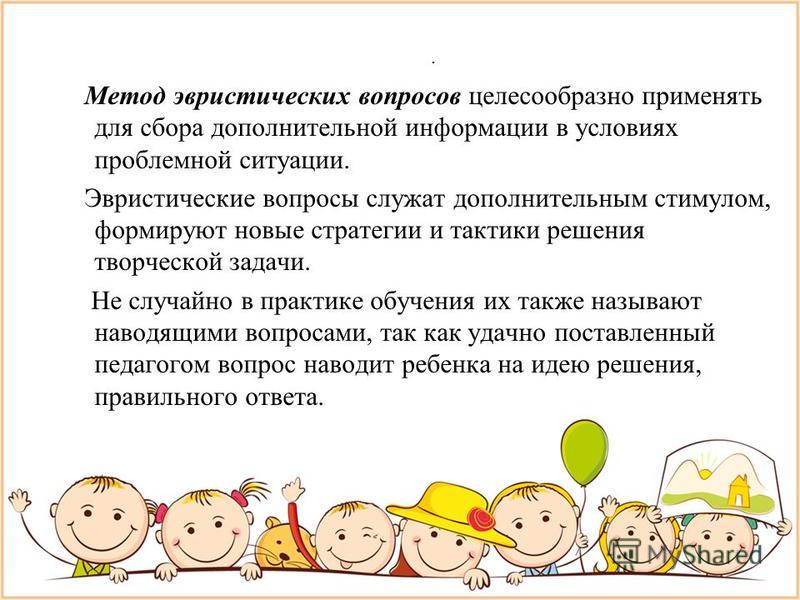
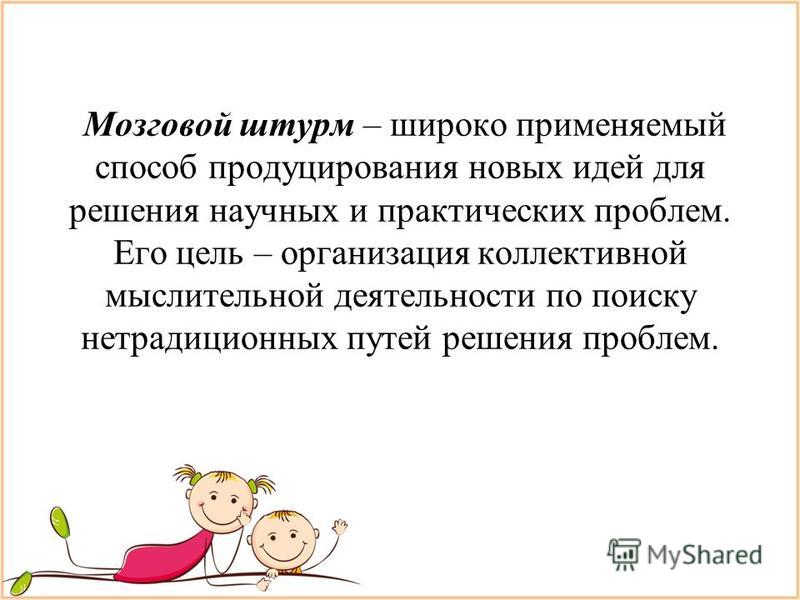
Modeling - a learning method aimed at the development of figurative thinking, as well as abstract thinking; involving the study of objects of knowledge on their deputies - real or ideal models; Construction of models of actually existing items and phenomena, in particular educational systems. Under the model, it is understood as a system of objects or signs that reproduce some of the essential properties of the original system, the prototype of the model.
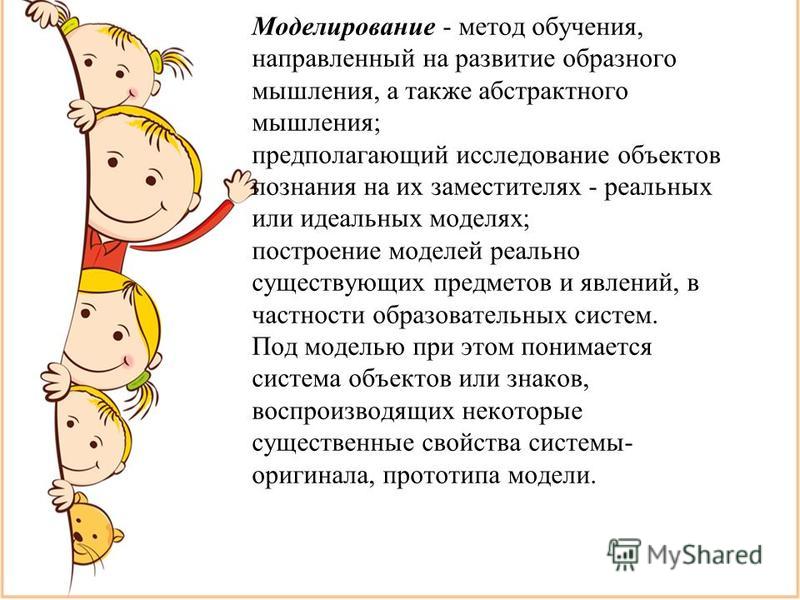
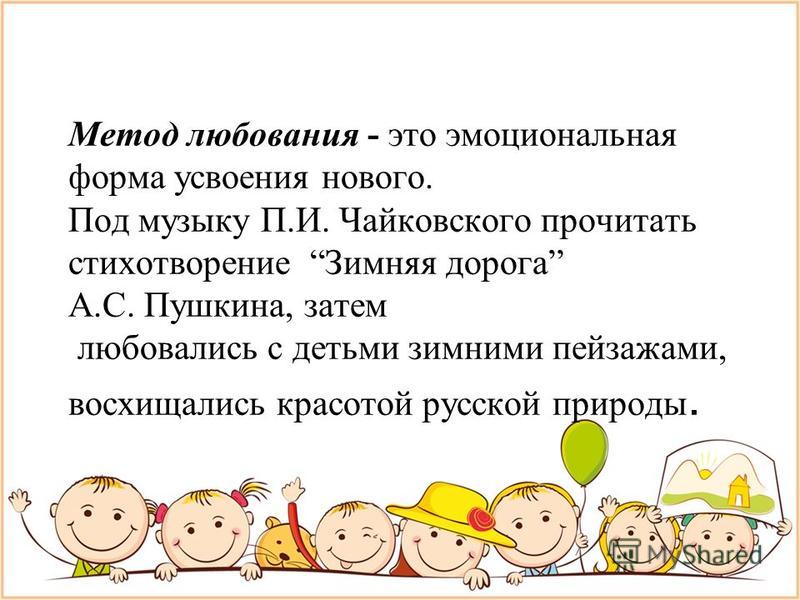
The research method is a learning method aimed at mastering the student of all stages of problem-search activities, the development of research skills, analytical and creative abilities. All stages of problem search activities carry out a child, modeling the research process and receiving a subjectively new result.
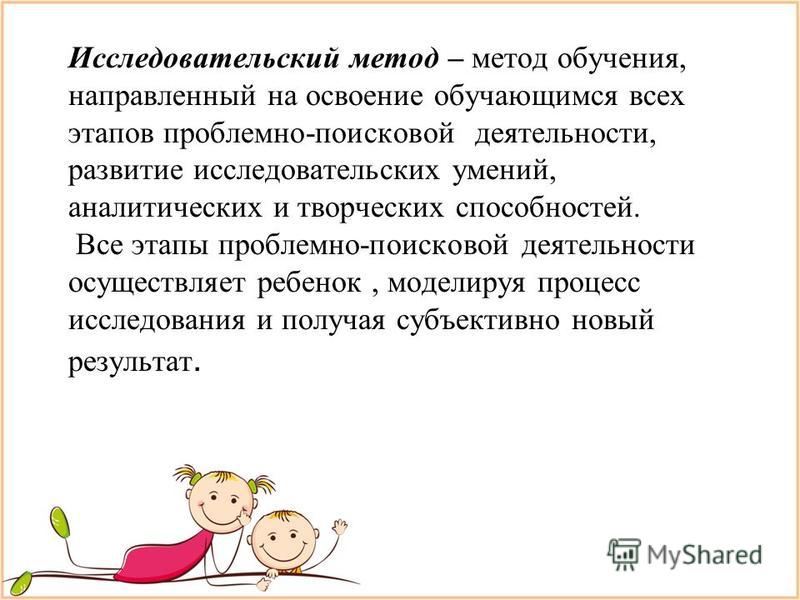
Active learning methods have their own distinctive features. This is: -group form of organizing the work of the participants of the educational process; - use of an activity approach to learning; -thetical focus of the activities of the participants of the educational process; - playing and creative training; -Interactiveness of the educational process; -Beclothes into the work of various communications, dialogue and polylog; - use knowledge and learning experience; -activation in the process of learning all senses; -reflexia learning process by its participants.
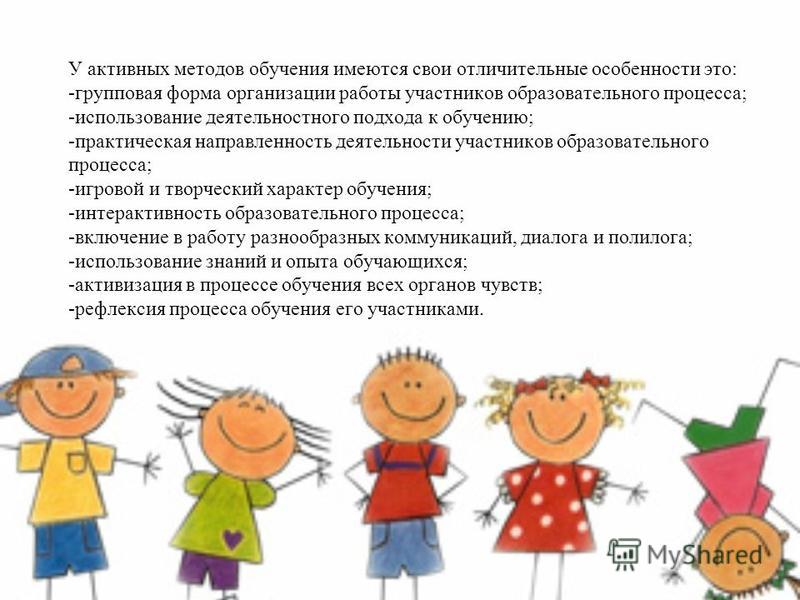
AMO is distinguished by non-traditional technology of the educational process: "Active thinking, and this activity remains for a long time, forces due to an educational situation independently accept creative content, emotionally painted and motivational justified solutions;
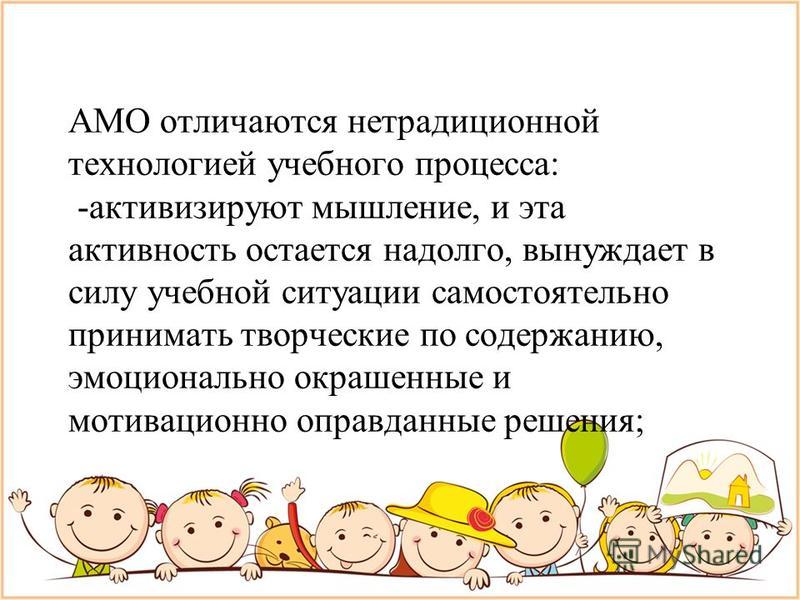
Develop partnerships; - increase the effectiveness of training does not by increasing the amount of information transmitted, but at the expense of the depth and the rate of its processing; - ensure consistently high learning and education results with minimal learning efforts.
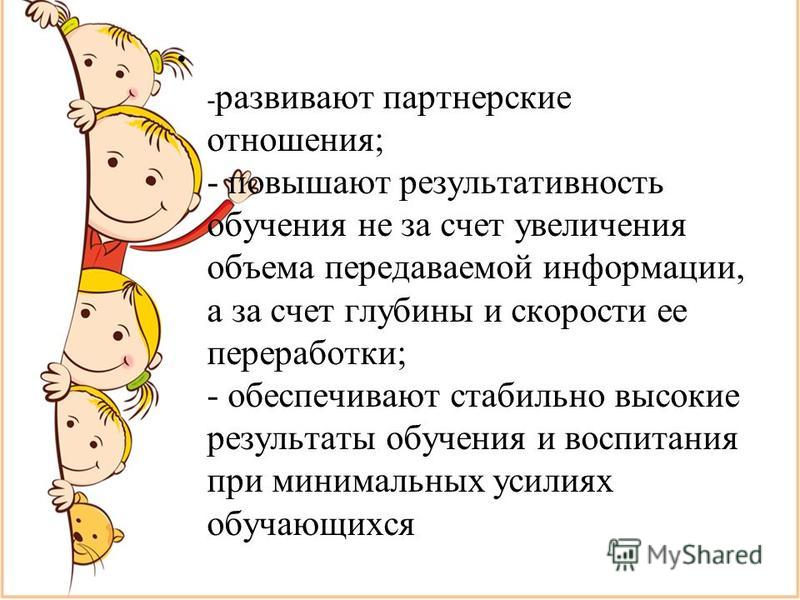
The transition to active learning methods begins with the use of interactivity in the educational process. With the help of active learning methods, you can develop the ability to work in a team, to carry out joint project and research activities, to defend your position, justify your own opinion and tolerance to others, adopt responsibility for yourself and the team.
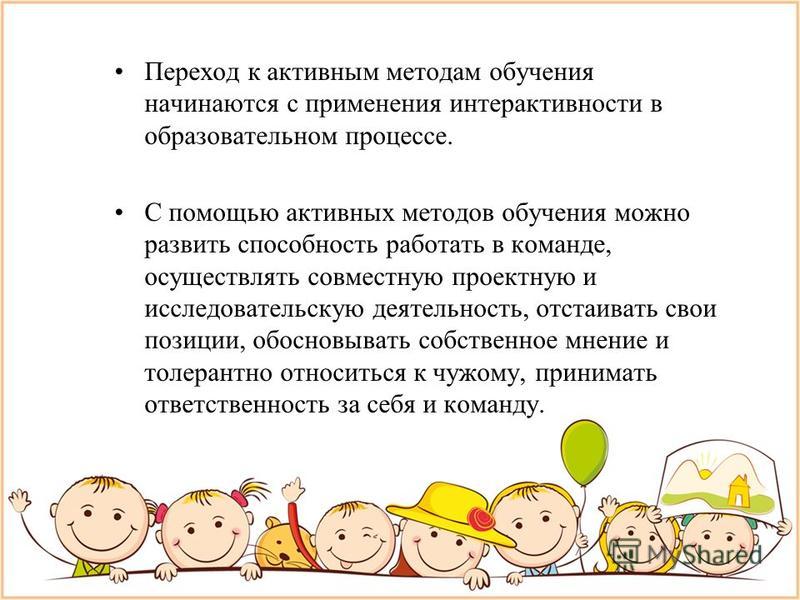
Thus, the use of active methods of training in the educational process of a pre-school educational institution contributes to the successful development of the educational program, which is based on the requirements of GEF, creating in educational activities with educational favorable atmosphere for work, the development of motivation for cognitive and research activities; The accumulation of their own experience and study of the experience of colleagues, systematic, integrated work and competence of teachers.
